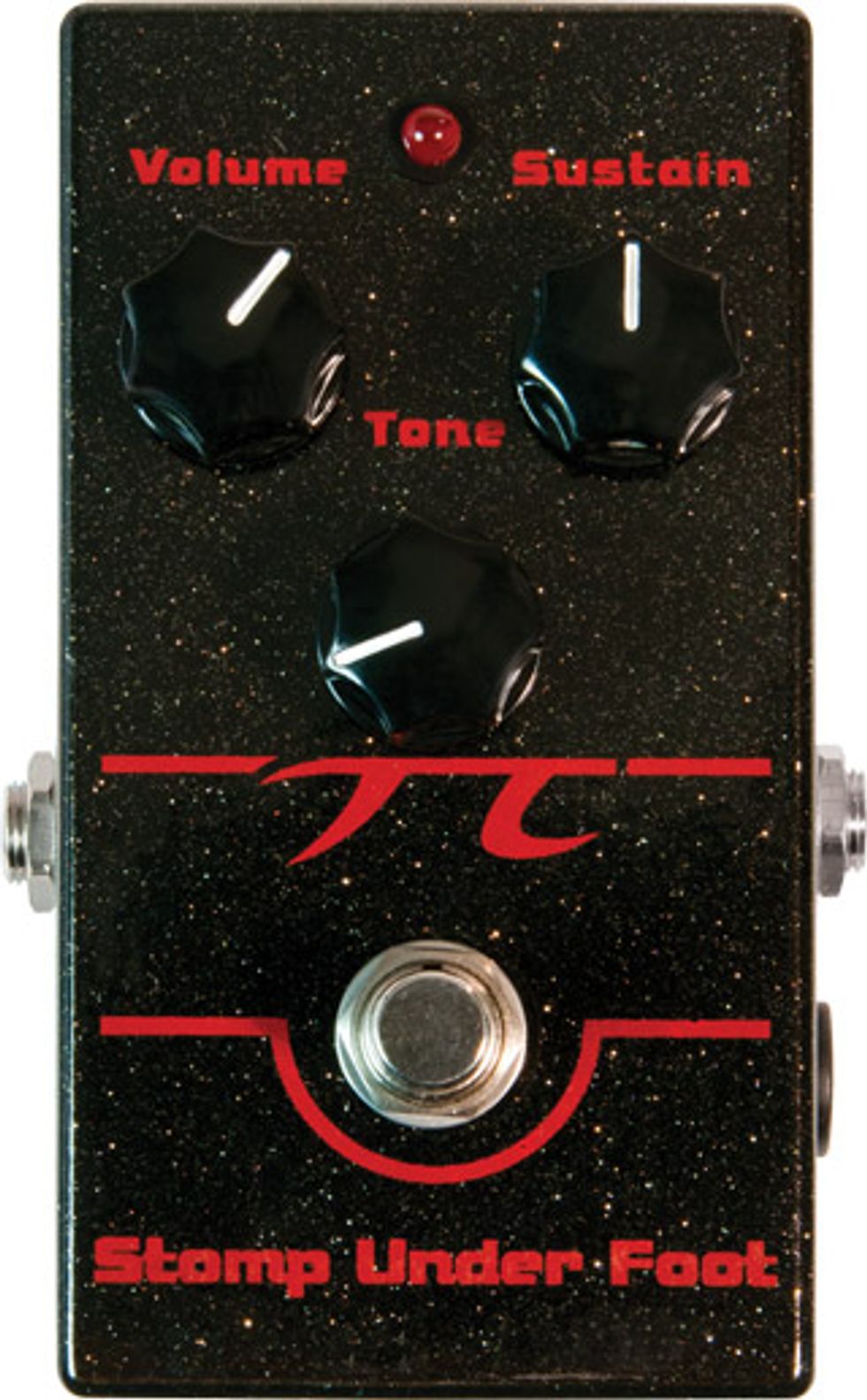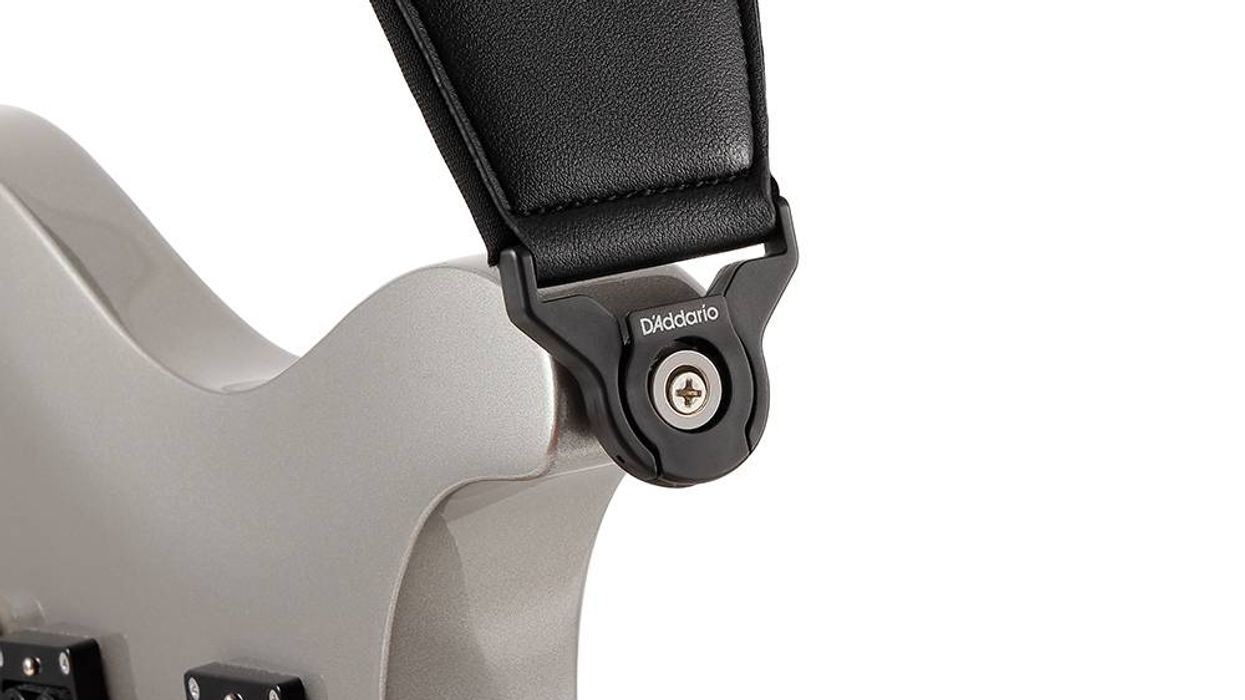
Without much fanfare, Stomp Under Foot’s Matt Pasquerella has become one of the foremost Muff-clone specialists in the known universe. The Massachusetts-turned-Florida builder’s pedals certainly aren’t the flashiest. But if you ask just about any Muff freak about the “State of Fuzz,” Matt’s work is bound to become a focus of conversation.
SUF built its reputation on superb-sounding versions of Muffs that don't annihilate your savings account. In particular, the company’s Violet Ram’s Head and Civil War are revered among even the most cork-sniffing Big Muff cognoscenti for their combination of authenticity and value. The authentic sounds from Stomp Under Foot’s pedals are the product of Pasquerella’s insatiable appetite for poking around the guts of vintage Muffs. All that time under the hood has led Pasquerella to some very interesting conclusions about what makes a Muff a classic or a dud. And some of his more recent revelations have led to The Pi—a Muff clone that doesn’t strive to precisely replicate a known classic, but instead focuses on the interesting combination of attitude and civility shared by many Muffs from the ’70s and ’80s. The end result not only delivers a fuzz vehicle that’s perfect for everything from slick-and-dirty Ernie Isley lead tones to skanky Stooges riffage, but acknowledges the cool differences with the Muff circuit that make a definitive version so elusive.
Mean-Looking Monster
With its gunmetal, metallic-flake
paint and a Klingon-esque take
on the Pi symbol, The Pi simultaneously
acknowledges the custom-
van-and-shag ’70s roots that
loom large in Muff legend and
declares that this is a Muff of
slightly more sinister intent. Like
all Stomp Under Foot pedals, it
takes an economical approach
to occupying pedalboard space
(though a top-mounted AC jack
would be nice) and the guts of
the pedal are unfussy and well
built. You get the feeling that
Pasquerella is more focused
on sound and reliability than
the fetishistic touches that put
some other pedals out of touch
for working musicians. It’s
refreshing to see Stomp Under
Foot embrace this take-care-of-business
approach. Elsewhere,
The Pi is a classic Muff design—
a volume knob, a sustain knob
(which essentially controls fuzz
content), and a tone knob.
Ratings
Pros:
Amazing range for a Muff clone. Retains detail
for heavy chording. Enlivens dark amps.
Cons:
Could use a top-mounted AC barrel to maximize
space efficiency.
Tones:
Ease of Use:
Build:
Value:
Street:
$160
Stomp Under Foot
stompunderfoot.com
Ready to Rip
Pasquerella tips his hat to post-punk
and Seattle-school players
a lot when talking about the
development of The Pi. And
indeed, there is a punky, slashing,
rip-it-up irreverence that
you can hear when you crank
the sustain. If you ever ended up
dissatisfied with a Muff because
power chords sounded freaking
glorious when you were alone
in the practice space, but turned
to mud once the rest of the
band showed up, The Pi might
be the fix. With a Stratocaster
out front, sustain at around 3
o’clock, the volume back around
noon, and tone at around 1
o’clock, The Pi transformed a
classically squishy 5Y3 Deluxe-style
circuit routed through a
close-backed Fender 2x12 into
an almost Marshall-like beast—
bellowing with round, complex,
chest-thumping, low-end content
and a brilliant, high-mid
growl that retained individual
detail. lt’s a fantastic chording
machine at these settings, with
the buzz and menace to propel
Ron Asheton-style savagery,
detail, and response—enough to
enable percussive hardcore and
Ramones-style eighth-note chugging,
and all the low end you
need for Sabbath sludge. You can
just as easily play folk-rock-style
arpeggios with a little bump
in the tone and loose nearly
nothing in the way of string-to-string
detail—a great recipe for
heavy-duty power pop. Adding
much in the way of volume past
two o’clock will obscure a little
detail in chords, at least in mid-power
amps. But for players with
high-headroom, 100-watt-plus
rigs, that extra octane could be a
ticket to heaven.
The very same qualities that make The Pi such a monstrous-but- refined chord machine make it a top-tier Muff for lead work. It retains much of the searing yet vocal identity that defines a good, vintage Ram ’s Head, but there’s also just a touch of Russian Muff-style low end. An unexpected surprise is the ease with which you can dial in buzzy, almost Fuzzrite-style lead tones by dialing back the volume, cranking the fuzz, and adjusting the tone to your amp and guitar.
The Verdict
Versatile and full of piss and
vinegar, The Pi is a fuzz of
many colors that can be a Muff
in the classic sense, but has
the range to move past those
limitations. Players that obsess
over the perfect Ram’s Head,
Russian Muff, or op-amp tone
will surely find deficiencies to
nitpick. But more open-minded
fuzz enthusiasts are bound to be
impressed with how deftly The
Pi can move from filthy to cultivated
to buzzy to singing. And
if you’re interested in cultivating
your own brand of Muff tone,
there’s plenty of fuzz acreage to
explore and stake out as your
own in this metal-flake menace.
























